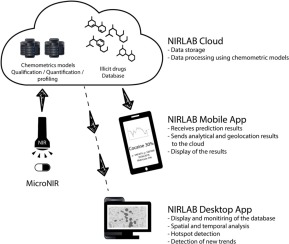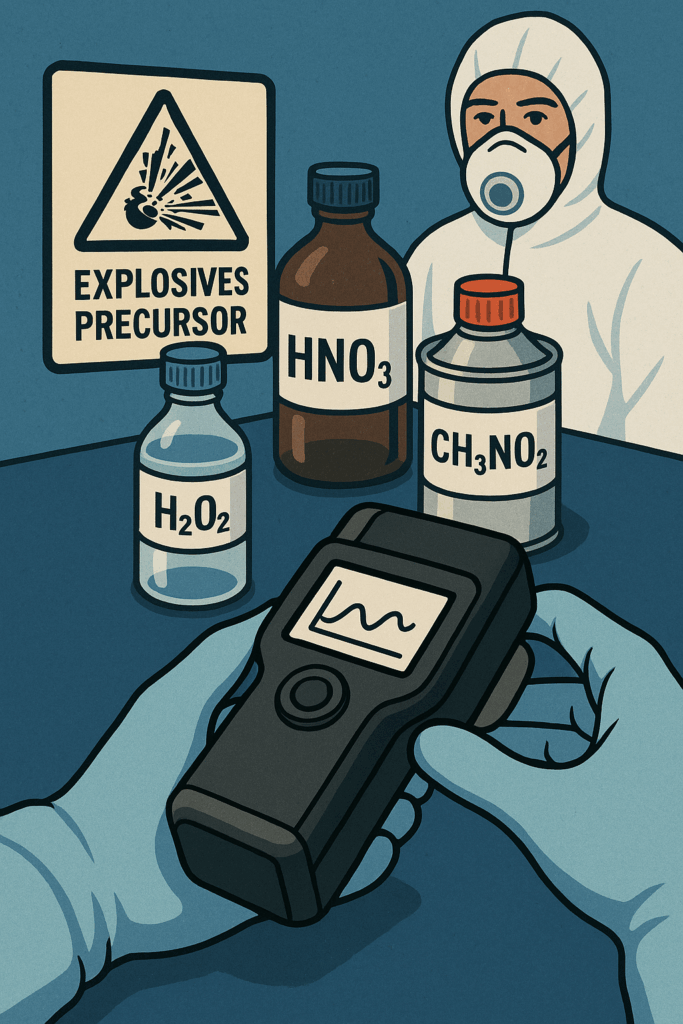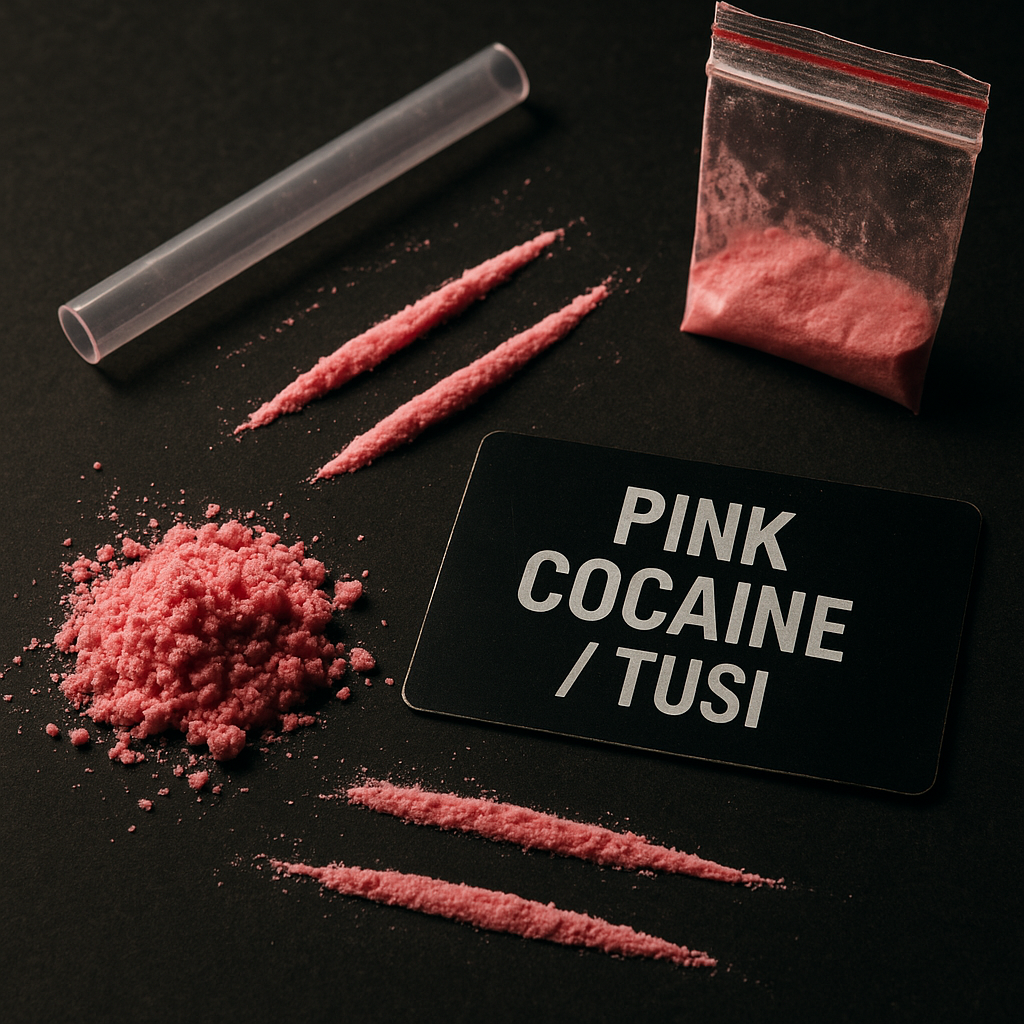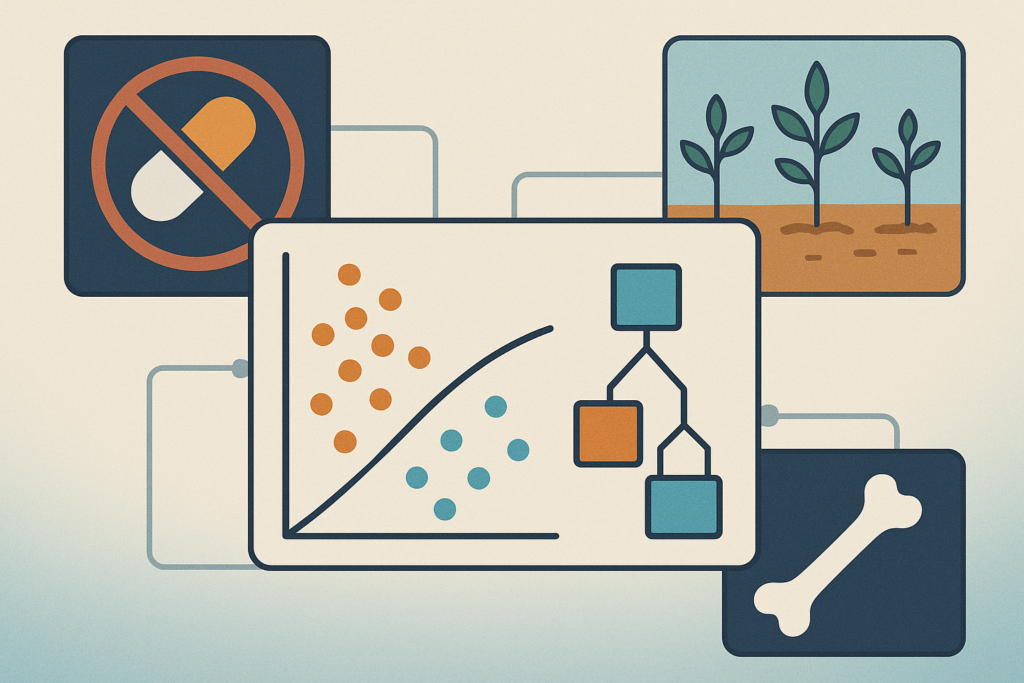Abstract
Full title: Providing illicit drugs results in five seconds using ultra-portable NIR technology: An opportunity for forensic laboratories to cope with the trend toward the decentralization of forensic capabilities
The analysis of illicit drugs faces many challenges, mainly regarding the production of timely and reliable results and the production of added value from the generated data. It is essential to rethink the way this analysis is operationalised, in order to cope with the trend toward the decentralization of forensic applications. This paper describes the deployment of an ultra–portable near-infrared detector connected to a mobile application. This allows analysis and display of results to end users within 5 s. The development of prediction models and their validation, as well as strategies for deployment within law enforcement organizations and forensic laboratories are discussed.
Hint: you can buy and download the whole article as a PDF document.
Graphical abstract

Introduction
In the context of the analysis of illicit drugs, the time required to get an analytical response remains at the heart of the concerns of magistrates and police officers, who want to know rapidly if the seized product contains an illicit drug. In Switzerland, information about the purity of seized material is also required, as it allows categorization of the case as a minor crime (e.g., personal consumption) or a major one (e.g., trafficking). For example, if a person is arrested with less than 12 g of pure heroin or 18 g of pure cocaine, the prosecutor can dispose of the case by simply seizing the illicit drugs and imposing a fine. However, if these limits are exceeded, the case is classified as a trafficking offence and the prosecutor continues the inquiry. Such a legal system relies on the ability to obtain fast and reliable results from seized material, ideally at the street (as opposed to the laboratory) level. The gold standards for drug analysis are high-performance liquid chromatography (HPLC) or gas chromatography (GC) techniques, coupled with diode-array detection (DAD) [1], flame- ionization detection (FID) [2,3] or mass spectrometry (MS) [4,5]. The primary weak points of these analytical techniques are related to the sample preparation, the analysis time, and the destructive nature of the analysis. Additionally, these techniques quickly generate problematic workloads that prevent laboratories from meeting their customers’ expectations. Finally, they are difficult to deploy at the street level. In this context, the search for a fast and portable analytical method is of great interest.
An elegant alternative, already intensively used in the pharmaceutical industry for quality control, is near-infrared (NIR) technology [[6], [7], [8]]. This technology has also been used for the analysis of falsified pharmaceuticals [[9], [10], [11], [12]] and the identification and quantification of illicit drugs [[13], [14], [15], [16], [17], [18]].
The development of portable analytical NIR capabilities offers the possibility of bringing the laboratory to the field. It also contributes to the trend toward decentralization and increasing need of rapid support and information for investigative and intelligence activities. As described by Casey et al. [19] in their study of the Kodak Syndrome, the decentralization and commodification of forensic capabilities is an important challenge that all forensic laboratories have to face at some point.
In this paper, we propose the development and the validation of a methodology for the field deployment of a portable NIR analyser capable of rapid, non-destructive, and reliable identification and quantification of heroin, cocaine, and cannabis street samples. We will also describe how this technology can be implemented within forensic laboratories and law enforcement organizations through a dedicated mobile application. Finally, we will show how the information provided by the technology could be extracted in an intelligence-led perspective that allows laboratories to add value and benefit the legal system as a whole.
Section snippets
Portable NIR instrument
In this study, the MicroNIR Onsite W 1700 from Viavi Solutions Inc. was selected, due to its portability, ease of use, and Bluetooth connectivity (Fig. 1).
This system is ultra-compact, weighs only 250 g, and is powered by a Li-ion battery with a service life of more than 10 h. It is provided with Bluetooth connectivity and is distributed by Viavi Solutions Inc. (Santa Rosa, California, USA). The detector operates in the NIR spectral region (i.e., 950–1650 nm) and includes a linear variable filter…
Qualitative evaluation
The confusion matrices illustrated in Table 2, Table 3 present the results obtained for the qualitative assessment of the cocaine and heroin prediction models, respectively.
Of the 2047 specimens containing cocaine only 12 were not predicted containing cocaine by the developed model. The sensitivity for the cocaine model is therefore equal to 0.994, which is excellent considering the number of specimens and their complex and variable matrix.
To measure the sensitivity of the heroin model, out of….
Discussion
The handheld NIR analytical approach proposed in this study brings the laboratory to the field [27,28] and provides users with real-time information about the type and the purity of the product investigated. It has been very useful in helping law enforcement organizations decide whether to proceed with investigations. One illustration of its application is the quick determination of cannabis type (i.e., illegal or legal regarding the Swiss legislation) in the field, an efficient and…
Conclusion
The democratization of portable and handheld analytical technologies that can deliver rapid and accurate information to law enforcement officers during their investigations opens the door to a new type of activity for the forensic laboratory. It also stimulates reflection within forensic laboratories regarding their role and the best way to enhance their results and adopt a more relevant and central role. Furthermore, it is an excellent opportunity for the laboratory to reconnect with police…
CRediT authorship contribution statement
Florentin Coppey: Writing – review & editing, Software, Conceptualization, Methodology, Investigation. Andy Bécue: Writing – review & editing, Supervision. Pierre-Yves Sacré: Conceptualization, Methodology, Investigation. Eric M. Ziemons: Conceptualization, Methodology, Writing – review & editing. Philippe Hubert: Conceptualization, Methodology, Investigation. Pierre Esseiva: Writing – review & editing, Supervision, Methodology, Conceptualization.
Declaration of Competing Interest
The authors report no declarations of interest….
Acknowledgements
The authors want to thanks the support of the fond InnoTREK of the Technology Transfer Office of the University of Lausanne. We also want to thanks the illicit drugs unit of the ESC for providing the majority results of the NIR and GC–MS data…
References
- K. Grogg-Sulser et al. Qualitative and quantitative determination of illicit heroin street samples by reversed-phase high-performance liquid chromatography: method development by CARTAGO-S 18th Int. Symp. Column Liq. Chromatogr. (1995)
- S. Schneider et al. Analysis of illicit cocaine and heroin samples seized in Luxembourg from 2005–2010 Forensic Sci. Int.(2011)
- P. Esseiva et al. A methodology for illicit heroin seizures comparison in a drug intelligence perspective using large databases Forensic Sci. Int.(2003)
- E.J. Magalhães et al. Evaluation of the composition of street cocaine seized in two regions of Brazil Sci. Justice(2013)
- I. Evrard et al. Composition, purity and perceived quality of street cocaine in France Int. J. Drug Policy (2010)
- H. Yan et al. Quantitative analysis of a pharmaceutical formulation: performance comparison of different handheld near-infrared spectrometers J. Pharm. Biomed. Anal. (2018)
- F. Been et al. Profiling of counterfeit medicines by vibrational spectroscopy Forensic Sci. Int.(2011)
- O.Y. Rodionova et al. Qualitative and quantitative analysis of counterfeit fluconazole capsules: a non-invasive approach using NIR spectroscopy and chemometrics Talanta (2019)
- O.Y. Rodionova et al. Application of NIR spectroscopy and chemometrics for revealing of the ‘high quality fakes’ among the medicines Forensic Chem.(2018)
- O.Y. Rodionova et al.NIR-based approach to counterfeit-drug detection TrAC Trends Anal. Chem. (2010)
- A.F. da Silva et al. Cocaine and adulterants analysis in seized drug samples by infrared spectroscopy and MCR-ALS Forensic Sci. Int.(2018)
- M.C. Hespanhol et al. Evaluation of a low-cost portable near-infrared spectrophotometer for in situ cocaine profiling Talanta(2019)
- C. Liu et al. Rapid qualitative and quantitative analysis of methamphetamine, ketamine, heroin, and cocaine by near-infrared spectroscopy Forensic Sci. Int.(2018)
- C. Pérez-Alfonso et al. A green method for the determination of cocaine in illicit samples Forensic Sci. Int.(2014)
There are more references available in the full text version of this article.


